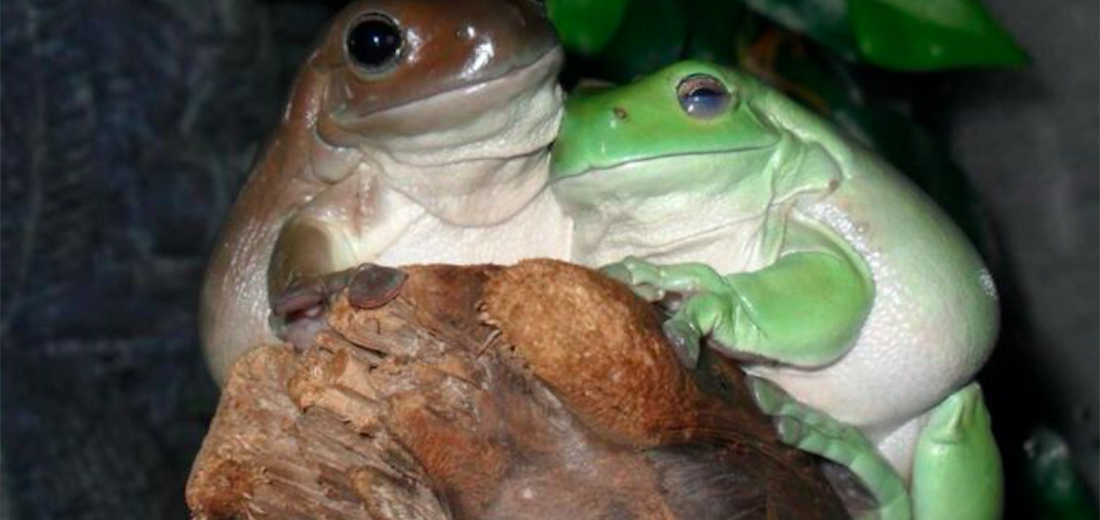
The White’s Tree Frog, aka the Dumpy Tree Frog or Smiling Tree Frog, hails from Australia, Indonesia, and New Guinea. They reside in coastal areas, but can also be found in drier areas near man-made reservoirs, cisterns, and a variety of other areas in which water collects. These frogs are termed ‘dumpy’ because they have a tendency to overeat and become fat. The fat layers develop above their eyes. The rest of their body and legs also get fat too but it’s more noticeable above their eyes. These frogs make great pets, if cared for properly. They will even call back to you, if prompted.
First the Stats…
Scientific name: Litoria caerulea
Weight: Up to 3.25 ounces
Length: Up to 5 inches
Lifespan: Up to 20 years
Now on to the Facts!
1.) These nocturnal (active at night) frogs vary in color from green, to brown, to blue.
2.) As is the case for many frogs, they are sexually dimorphic in that females are markedly larger than males.
3.) White’s tree frogs eat invertebrates, like insects. They will also eat small frogs, lizards, mice, and even snakes.
4.) During breeding season, the males develop a dark “nuptial pad” on the inside of their thumbs. This helps them grip the female during amplexus (mating position).
5.) Females lay between 200 – 1,000 eggs, 2 times each season!
But wait, there’s more on the White’s tree frog!
6.) Tadpoles emerge within 24 hours. They then undergo their metamorphosis into froglets in 4 – 5 weeks time. The juvenile frogs reach adult size in approximately 4 – 5 months, but aren’t sexually mature until about a year old.
7.) They are arborial animals, spending nearly all of their time in trees and shrubs.
Did you know…?
These frogs will eat their shed skin as they grow!
8.) Like all amphibians, they absorb water through their skin. They even take in oxygen through their skin!
9.) They have a loud, hoarse, bark-like call they use to attract females or advertise their location.
10.) The genus Litoria contains 181 known frog species. All are native to Australia and the surrounding island countries.
Now a Short White’s Tree Frog Video!
Also, check out the Critter Science YouTube channel. Videos added frequently!
Want to suggest a critter for me to write about? Let me know here.



